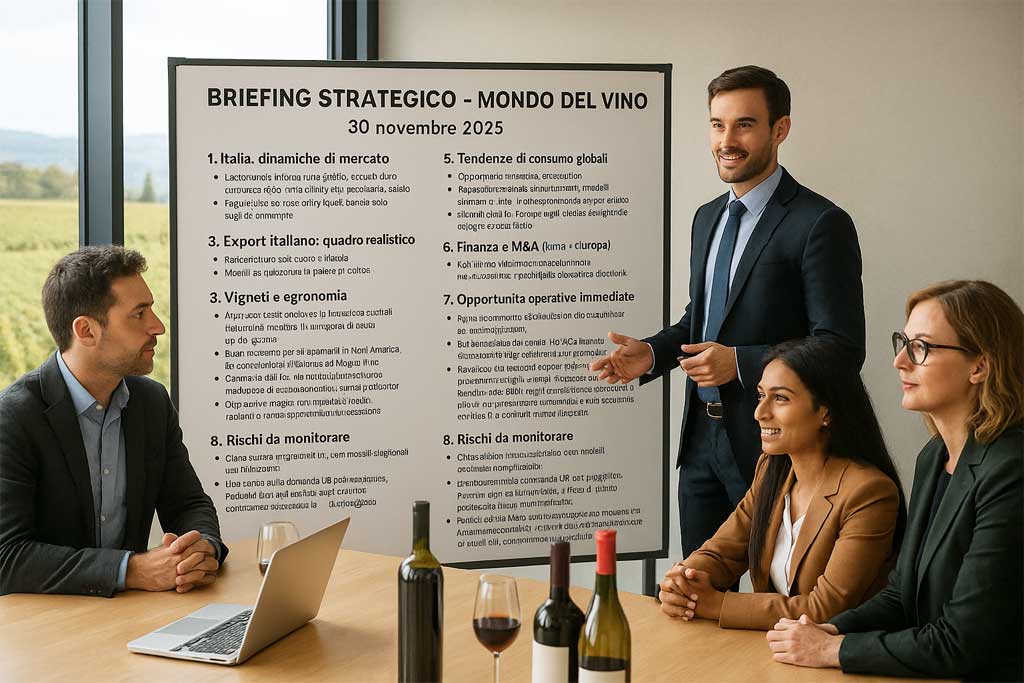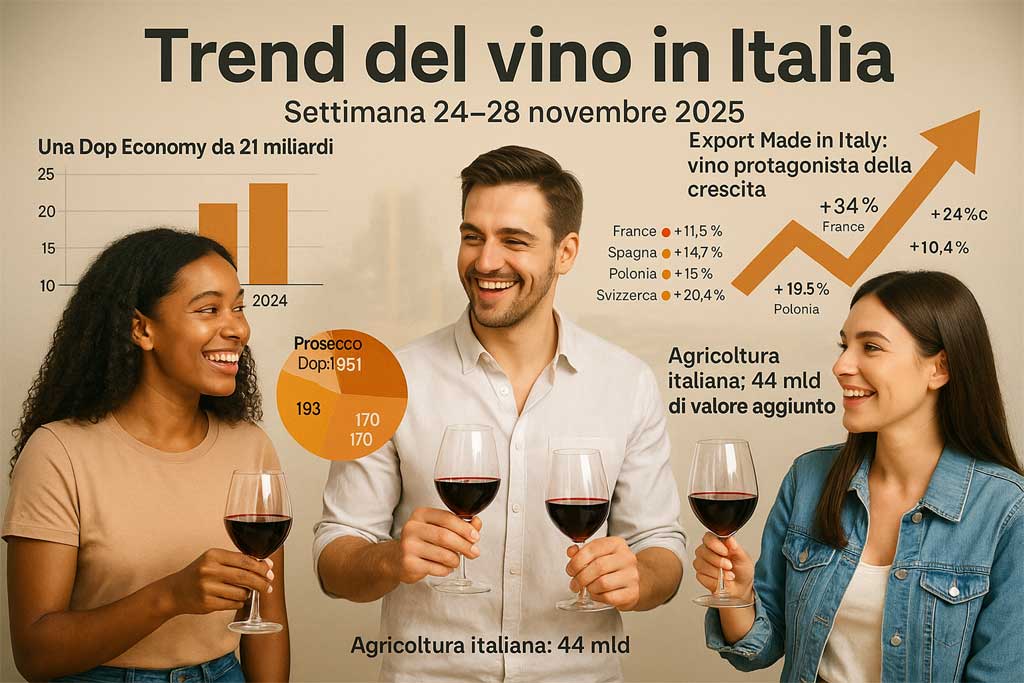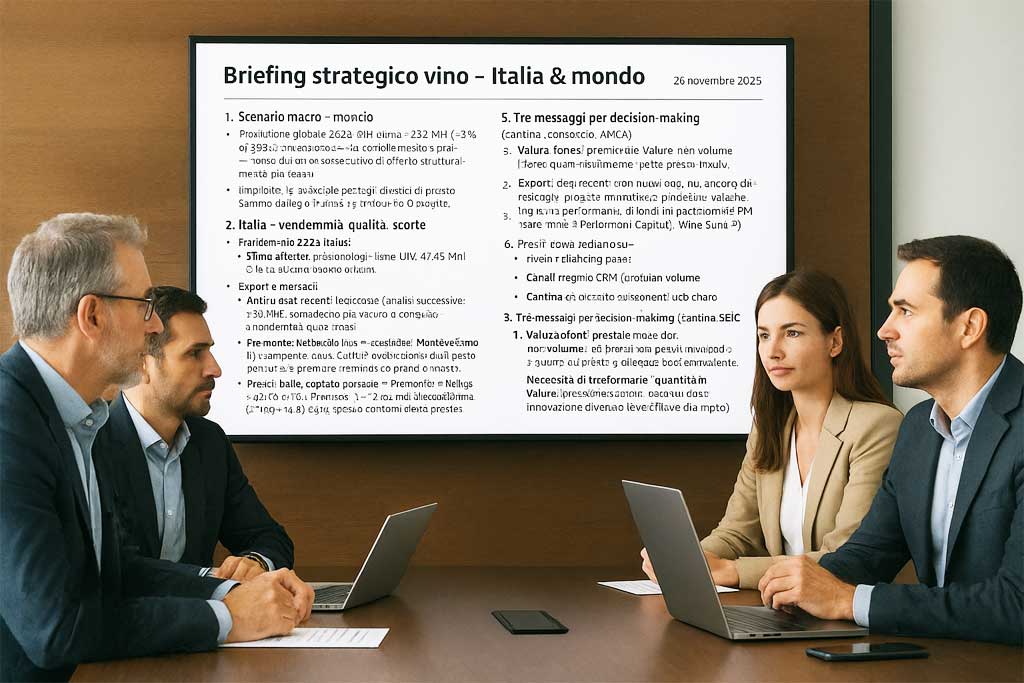Information date: November 30, 2025
1. Italy: Market Dynamics Domestic demand remains flat: zero growth in the large-scale retail channel over the last eight weeks, negative growth in the entry-level segments, and only premium IGT wines held steady. Food service continues to represent the key driver of margins, but orders are more selective and focused on brands with strong storytelling or recent awards. Price pressure: food price inflation is receding, but internal logistics have not yet normalized and are impacting the costs of small and medium-sized wineries.
2. Italian Exports: A Realistic Picture. The US is holding up, although shelf rotation at major retailers has lengthened by about 10–12 days. Sparkling wines are performing well in North America, with Prosecco slightly eroding in the UK. Germany is stable, but lacking momentum: greater innovation is needed in positioning, not product. China remains fragile, with cautious importers and slow turnover: opportunities only for established and highly structured wineries. Interest is growing from Southeast Asia (South Korea and Vietnam are more reactive).
3. Vineyards and agronomy The 2025 harvest confirms a two-speed Italy: North and Central Italy with regular yields, while the South is under stress due to irregular climatic peaks. Many wineries are recalibrating their planting plans toward more resilient grape varieties. Agricultural costs remain high, but energy is more predictable and allows for more accurate planning for 2026.
4. International competition. France is relying on the narrative of excellence to defend its margins, while the Spanish are aggressively entering the medium-high segments with more competitive prices. The New World is showing signs of maturity: Australia and New Zealand are curbing production, aiming for a more premium repositioning. The United States is pushing the domestic market, rather than exports.
5. Global consumption trends: Consumers are seeking “readable” wines: less extraction, more drinkability. The most reactive categories are fresh whites and classic methods, while structured reds only thrive if they have a strong brand behind them. Sparkling wines are still growing, but at a slower pace. Selective premiumization only works where there is traceability and a real reputation.
6. Finance and M&A (Italy Europe) In the last quarter, there was a growing appetite for acquisitions of small and medium-sized producers with recognizable brands or valuable land assets. Funds are returning, but with two conditions: clean EBITDA and clear governance. Multiples remain largely stable: 6–8x for well-managed companies, higher for companies with a strong export share or high-value land. There is also growing interest in mineral water due to logistical and commercial synergies.
7. Immediate operational opportunities: Repositioning historic labels towards more contemporary lines. Strengthening the HoReCa channel through professional ambassadorships in key cities. Reviewing export contracts through 2026 to protect margins and payment terms. For those considering M&A: today, it is advantageous to target players with succession issues or with excess inventory that are squeezing liquidity.
8. Risks to monitor: Weather still unpredictable, with unreliable seasonal patterns. Uncertainty about post-energy UK demand. Possible US-EU tariffs on alcohol if the technology dispute resumes.





